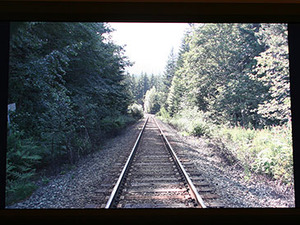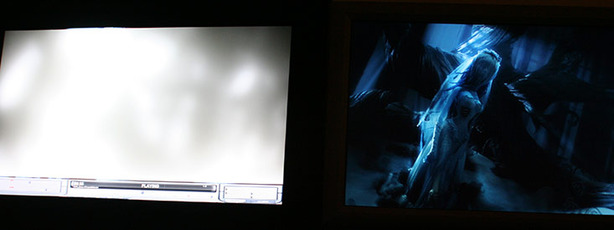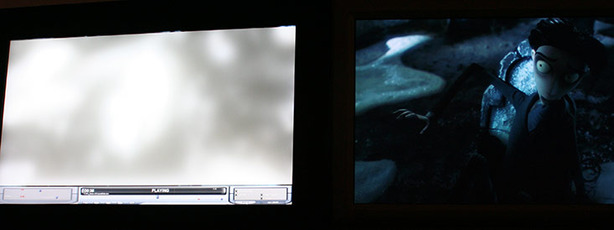
Dolby
We featured an exclusive look at Brightside’s HDR display technology waaay back in 2005 and then the company was acquired by Dolby about a year ago and at so we were keen to see how Dolby was integrating it into its portfolio which is predominantly sound focused.Dolby was keen to point out the acquisition was not just a further supplement to its product range, but a technology to enhance the overall movie experience – something which Dolby is very much a part of having been the native sound standard in both VHS (Dolby Stereo) and DVD (Dolby 5.1).
While the company feels the High-Definition movie era has benefited from the move to higher bitrate, lossless sound reproduction, it says the flat panel display has in fact gone backwards – losing contrast ratio and visual spectacle.
While Plasmas offer a better constrast ratio than LCDs, they run far hotter, are typically thicker and use far more electricity. In addition, making them below 37" or usually 42" is uneconomical. LCDs on the other hand is generally thinner, lower power and are available in a greater range of sizes but generally have poor colour definition and contrast ratios, and feature at most a very limited 8-bit colour depth.
This is where Dolby was very keen to promote its HDR technology – there is not only the benefit of a far, far greater contrast ratio as only the sections of the screen that need to be lit, are lit, but it also has a native 16-bit colour depth.
 The 1,400 surface mount white LEDs on the back of the 37" pre-production model provide "30 percent lower" power consumption than the normal two CCFL tubes, while running cooler and offering a uniform backlight. 1,400 may seem like a lot to go wrong, but if a few fail over the years the technology is clever enough to detect this and compensate by brightening the surrounding LEDs slightly.
The 1,400 surface mount white LEDs on the back of the 37" pre-production model provide "30 percent lower" power consumption than the normal two CCFL tubes, while running cooler and offering a uniform backlight. 1,400 may seem like a lot to go wrong, but if a few fail over the years the technology is clever enough to detect this and compensate by brightening the surrounding LEDs slightly.In addition, as the unit gets older the LEDs will fade, but again, the technology can compensate by increasing the voltage proportionately. However, doing that will only accelerate the death of the LEDs, but the lifespan should be at least comparable to what's currently on offer. Because of all of this image processing we became concerned about video/audio syncing issues; however Dolby assured us that there were none.
We were also told that on more budget-orientated models, as few as 700-500 LEDs can be used to provide a very similar effect at a far lower cost. The technology is also very green – there is no mercury in white LED production unlike CCFLs and Dolby cited Haitz Law of LEDs where—in a similar way that Moore's Law works for CPUs—every 18-24 months the Flux (brightness) of LEDs has doubled and the costs have dropped proportionately.
The company told us that this has been a consistent trend in the last 30 years and it should mean that LEDs will become the backlighting method of choice in the coming years.


Having seen Tim Burton’s Corpse Bride at the cinema and knowing Tim usually makes dark movies, I was quite shocked at just how dark all of the scenes were – the depth of shadow is incredible, certainly akin to Plasma, and sitting side by side a normal LCD of the same size there's just no contest. If you dropped into Dixons (or wherever on the high-street) and saw the same side-by-side comparison you'd want pay the price premium – it really is that good.
What is the price premium though? Well, that's yet to be seen – it depends on the cost of the license from Dolby, LEDs and other processing hardware, and how easily the technology fits into current LCD production lines.

MSI MPG Velox 100R Chassis Review
October 14 2021 | 15:04








Want to comment? Please log in.